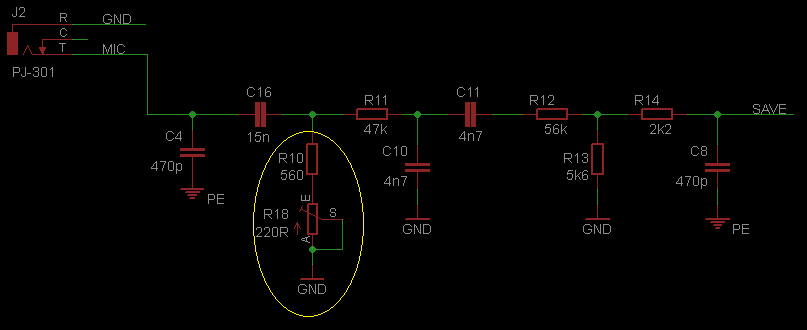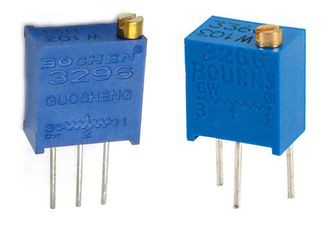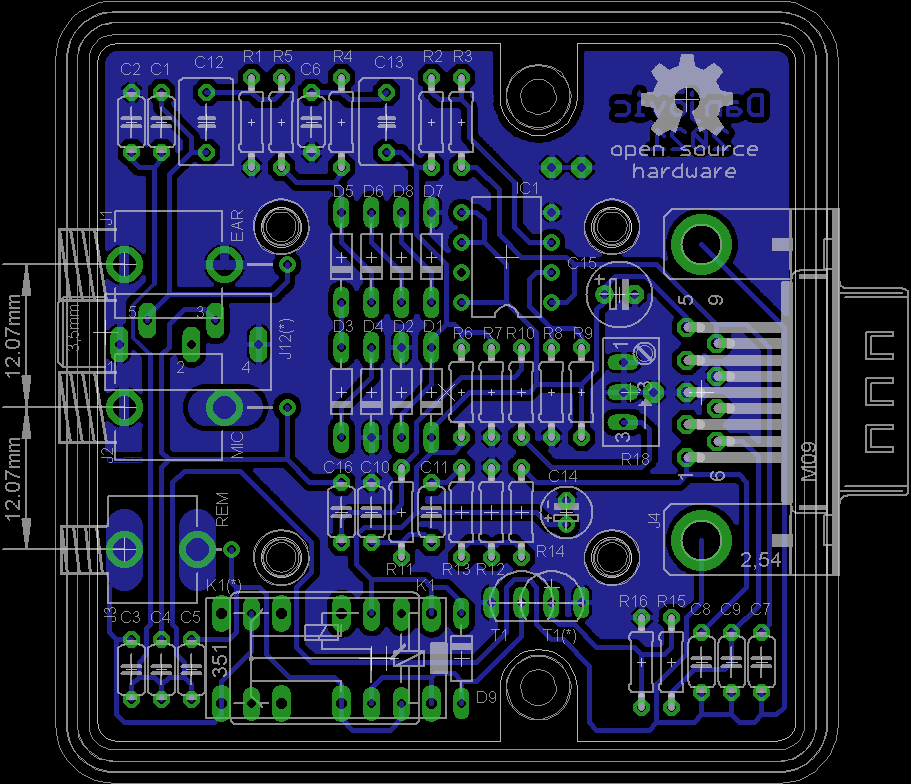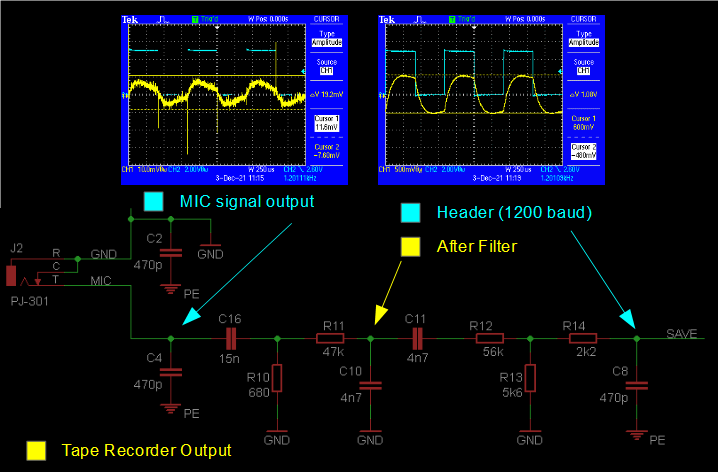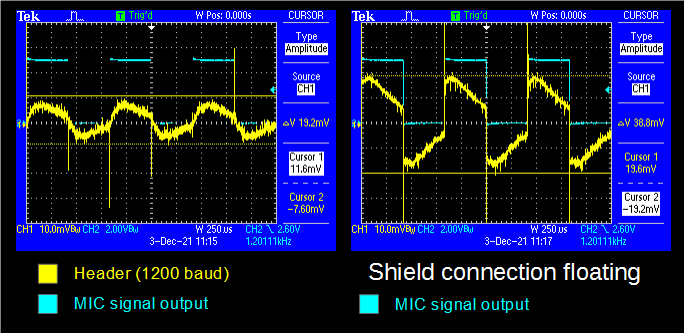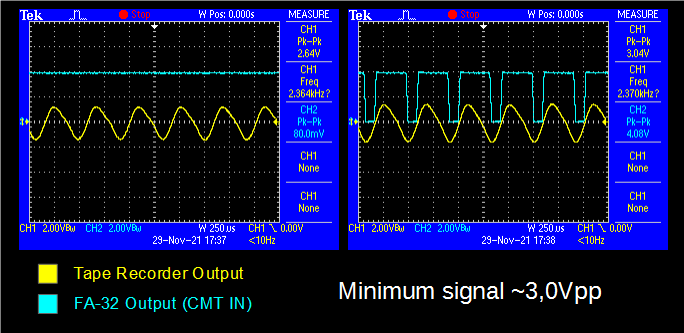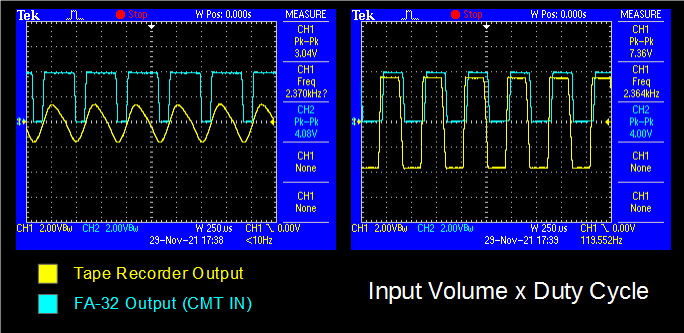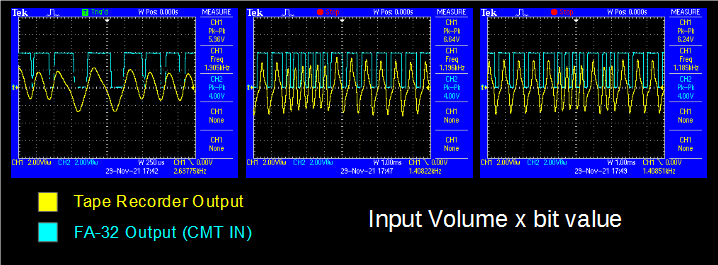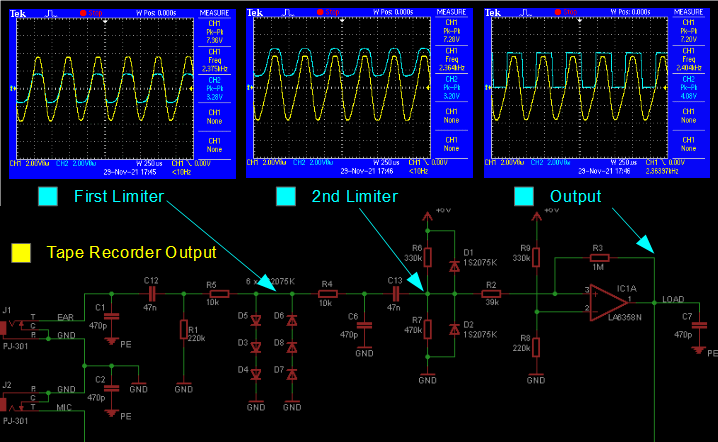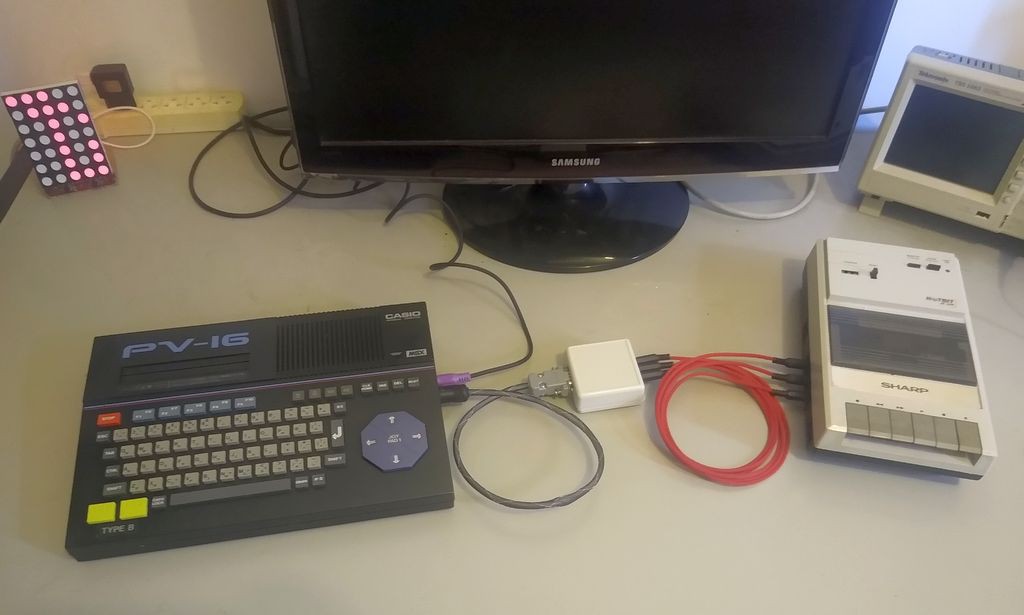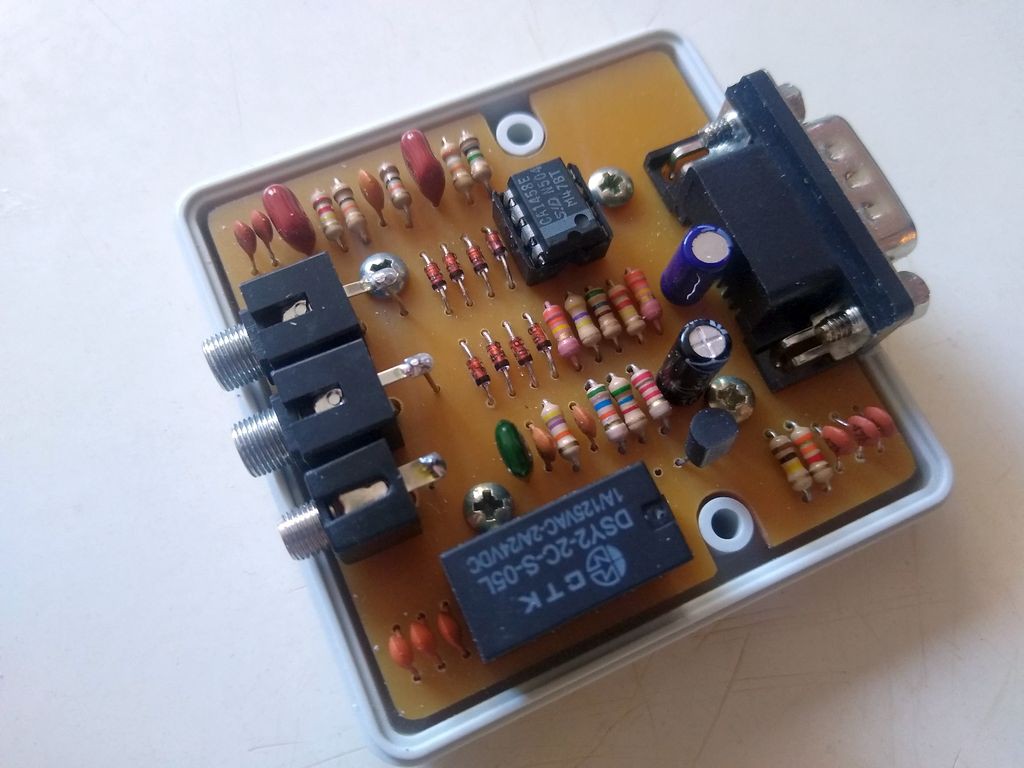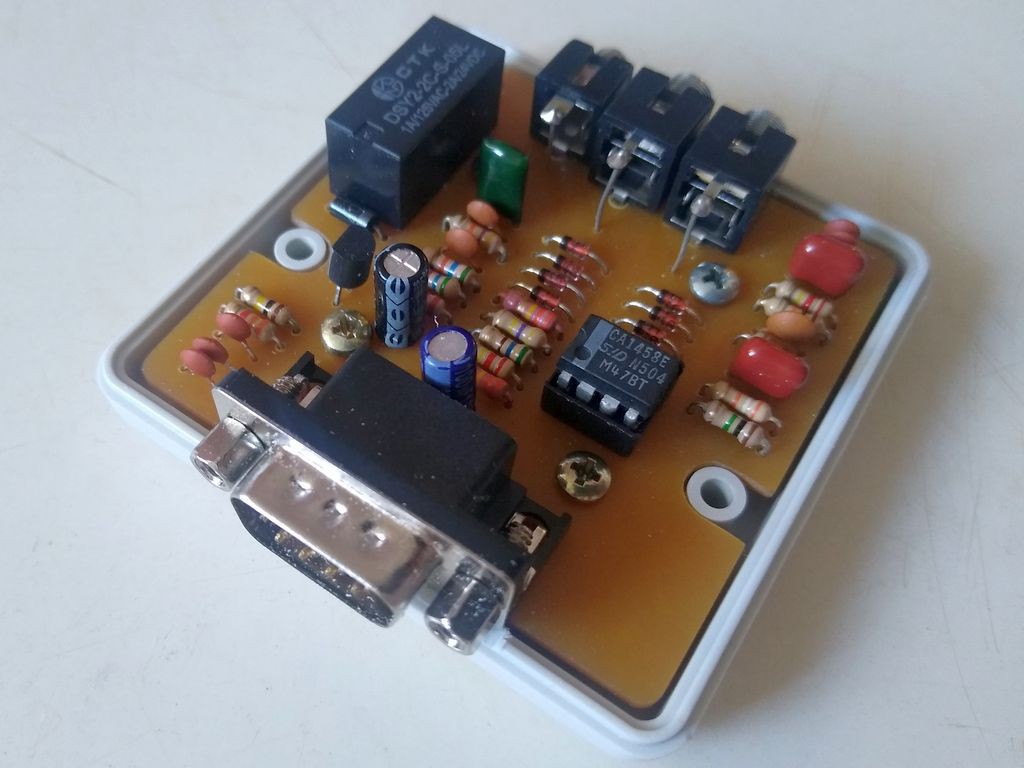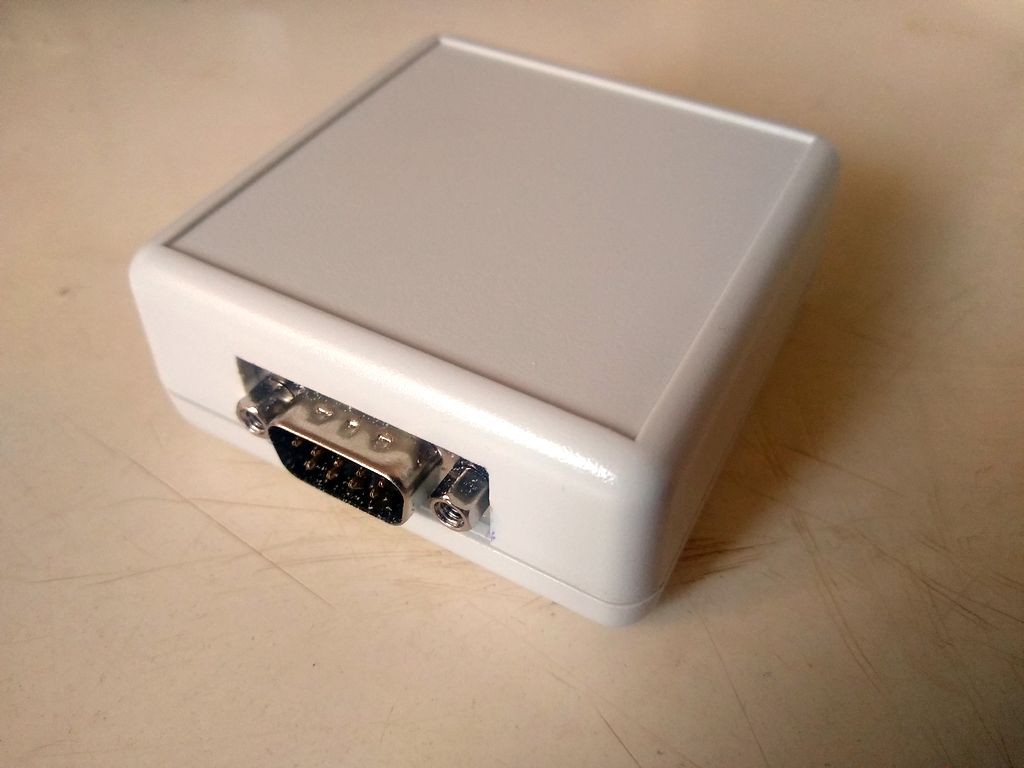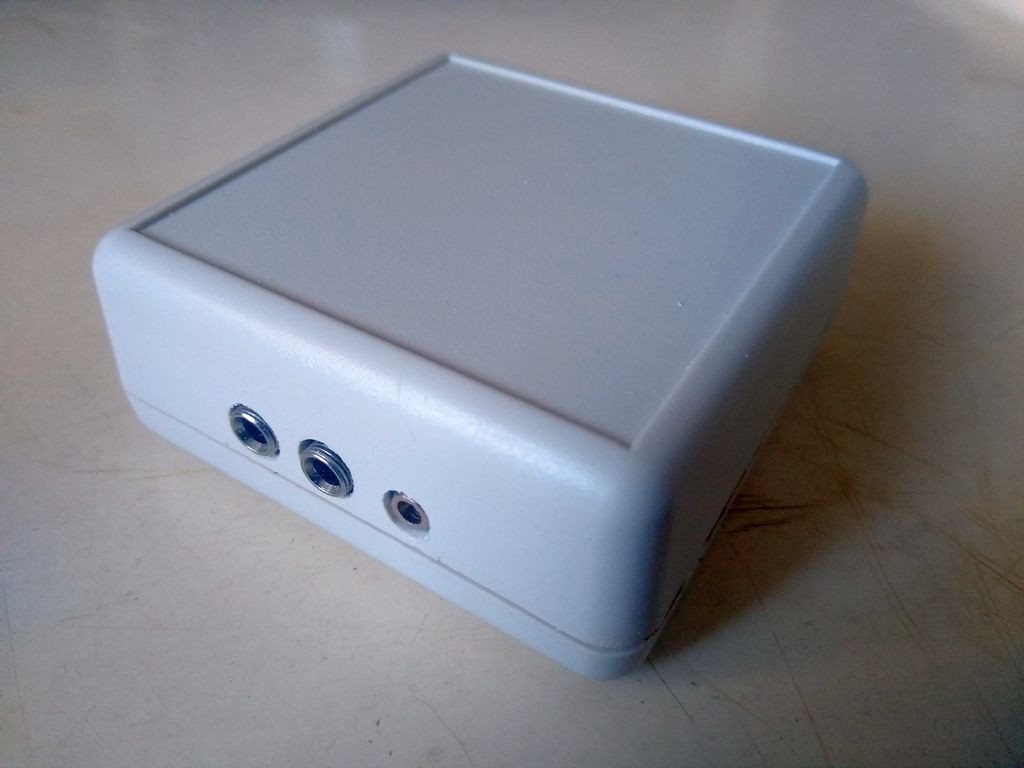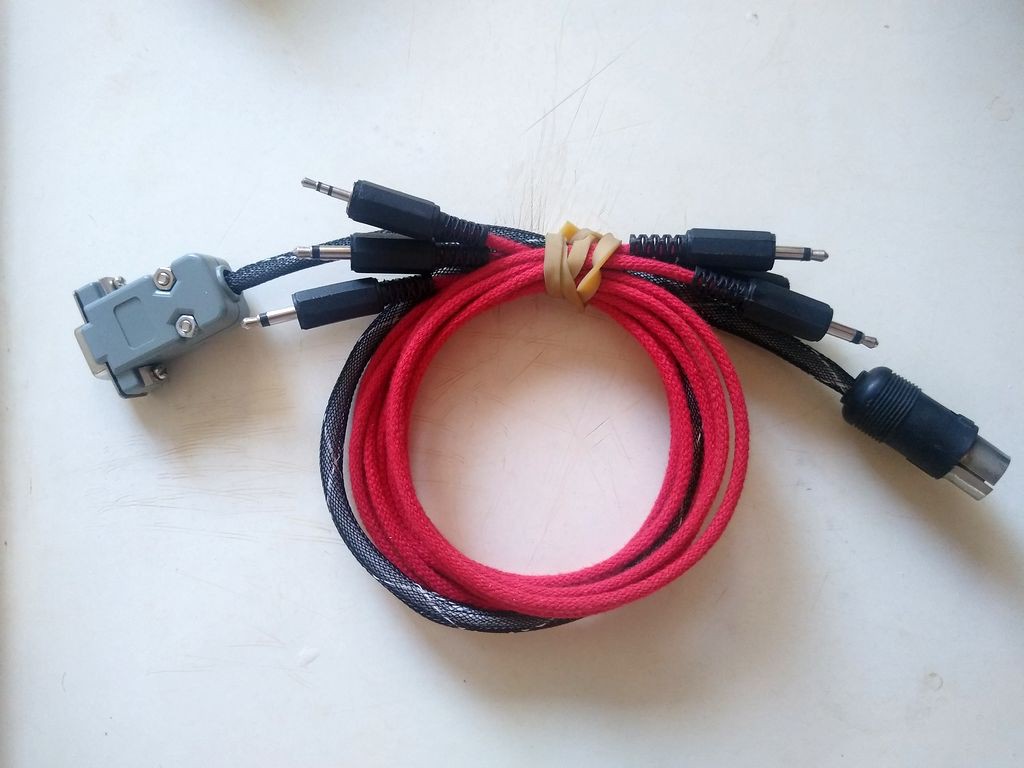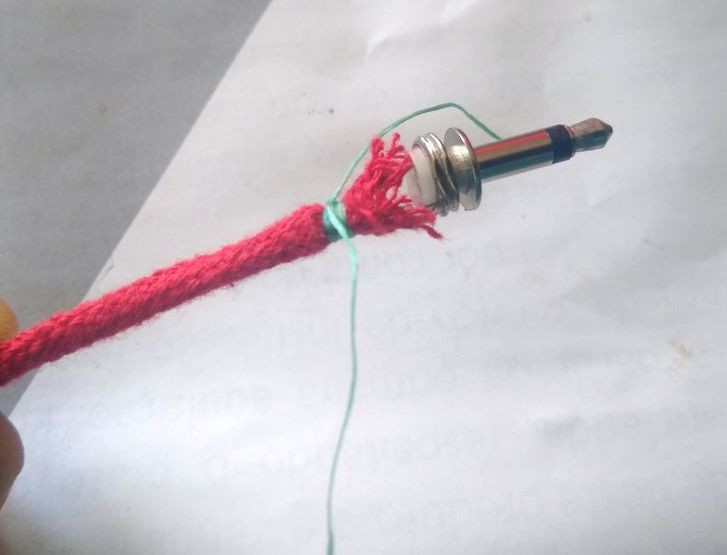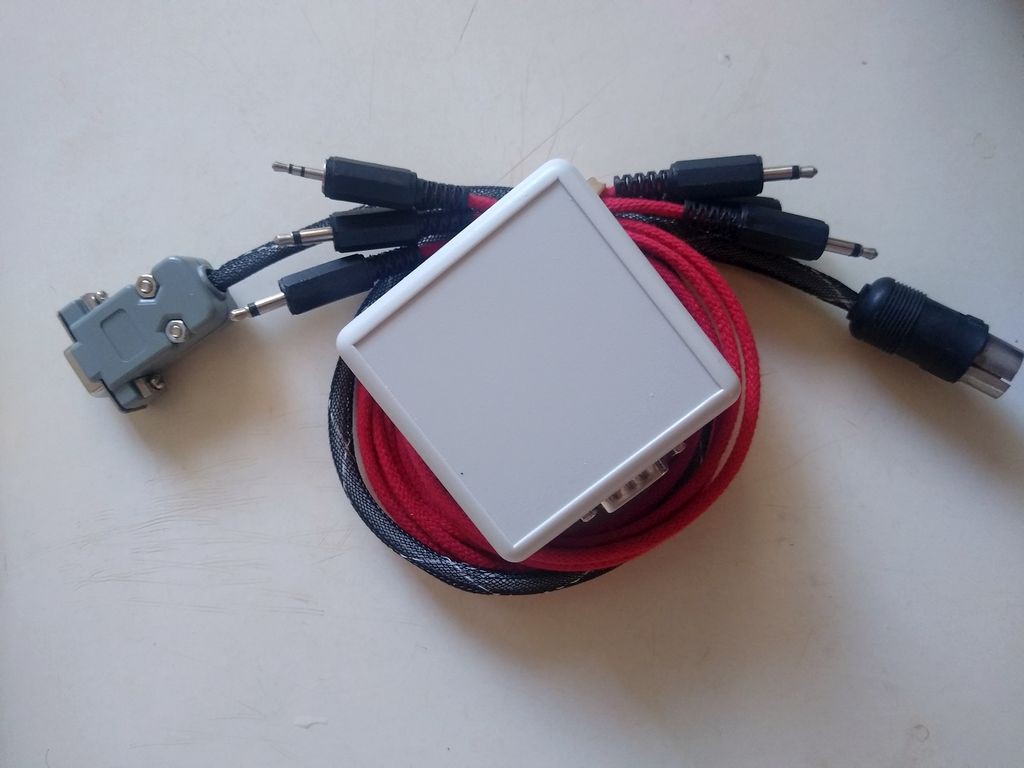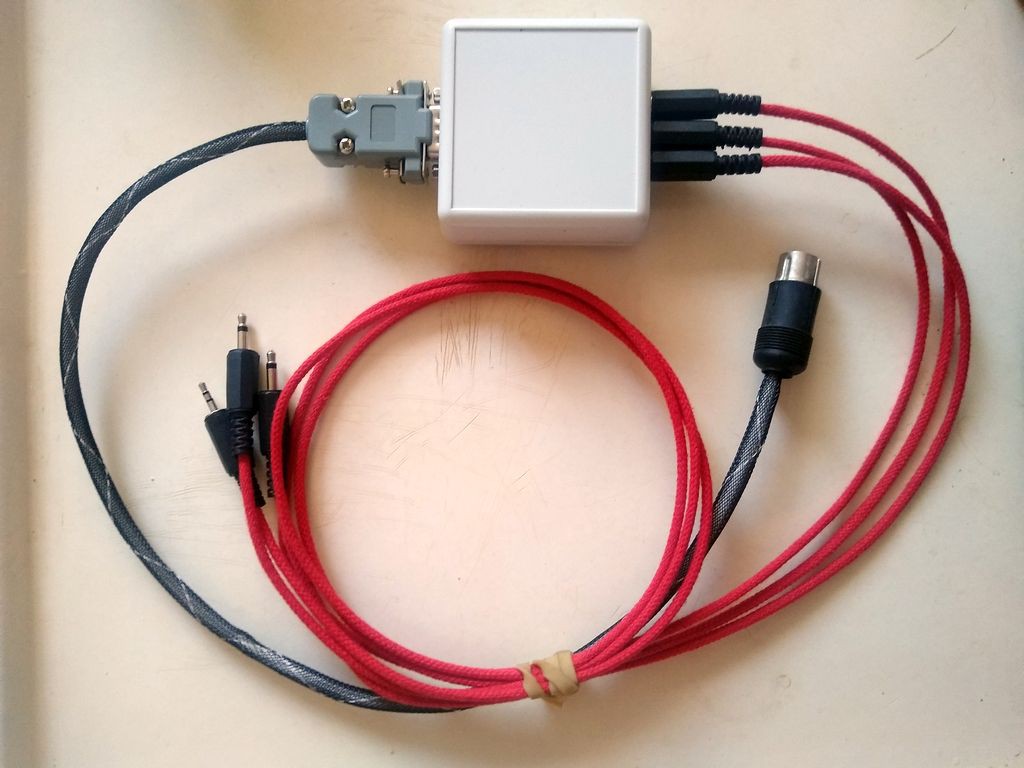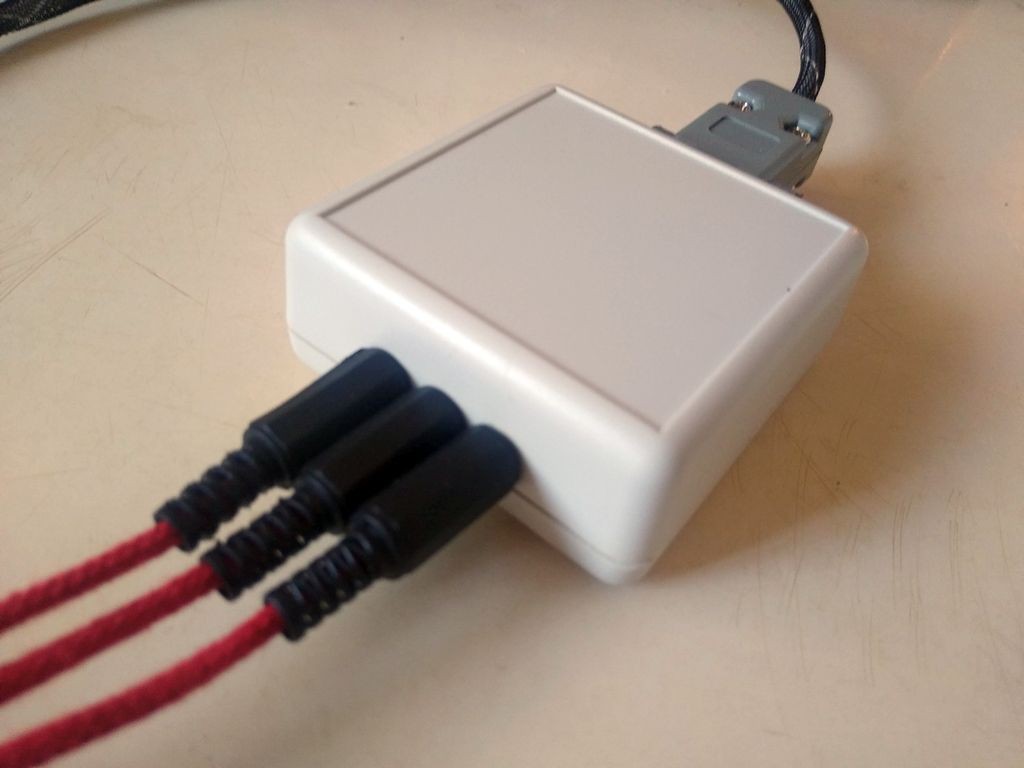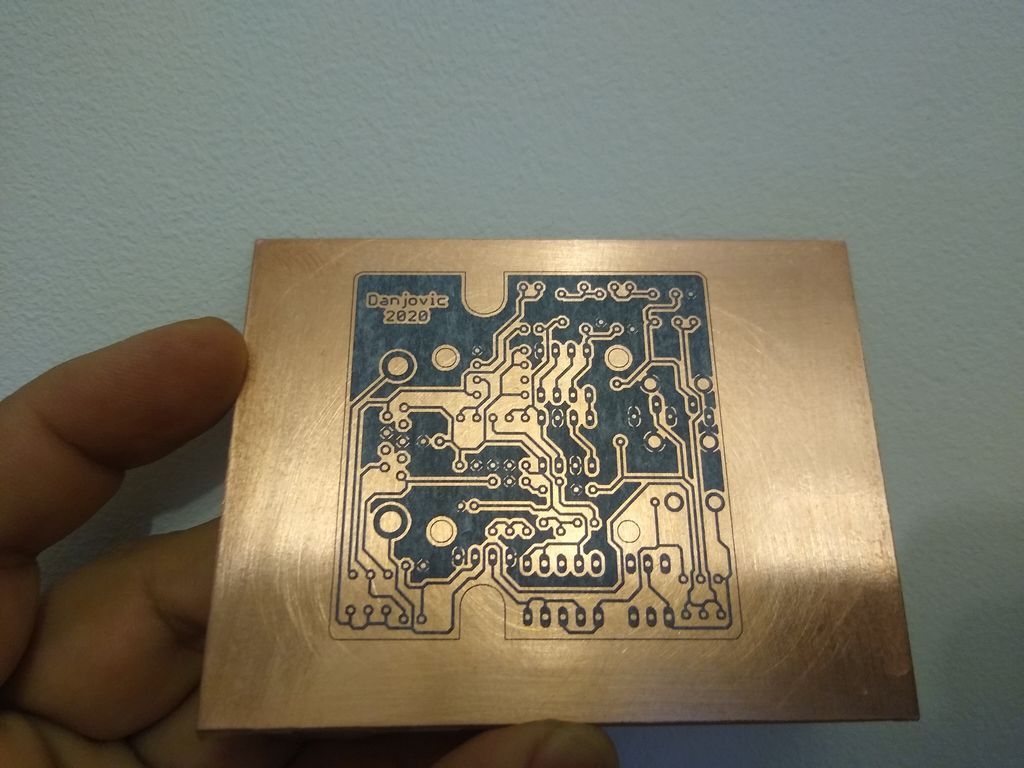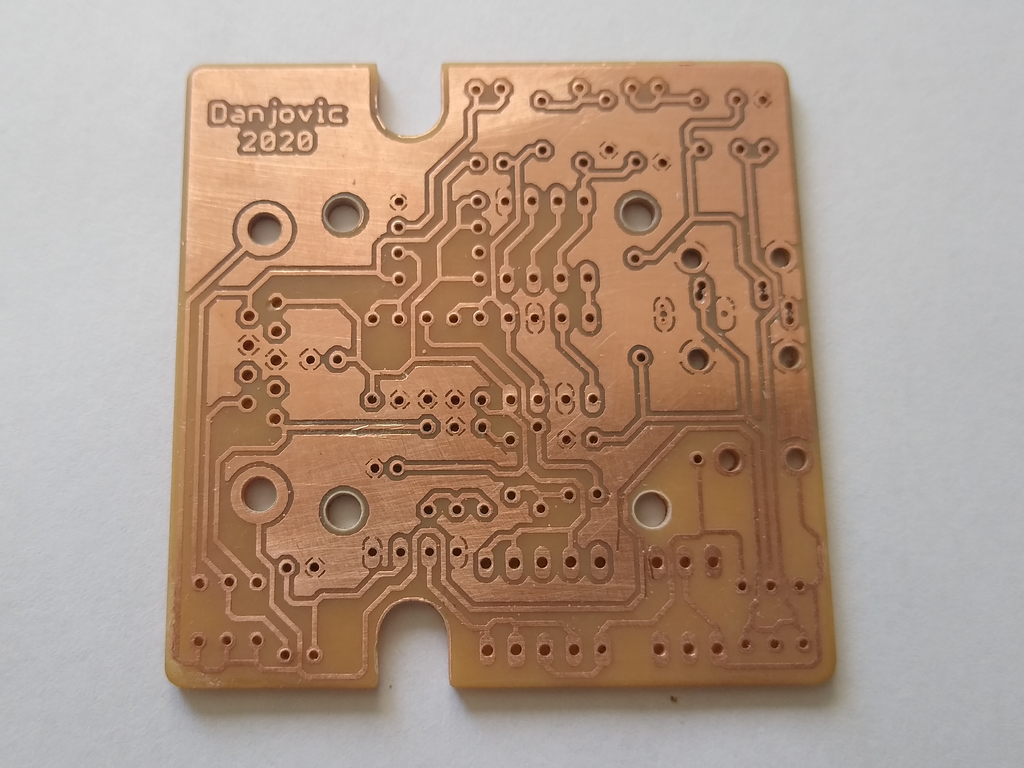-
MIC signal adjustment
12/04/2021 at 00:55 • 0 commentsI have inserted one trimpot at the PCB to allow some adjustment on the MIC signal. It is placed in series with the lower resistor of the voltage divider on the output stage.

There was not much room for a trimpot without a significant redesign of the board, but it was possible to fit a Bourns 3296 or 3266 series vertical adjustment trimpot.

And the layout of the PCB with the added trimpot is shown below. This board also provides more room between the P2 Jacks.

-
Waveforms: Writing to Cassette
12/04/2021 at 00:35 • 0 commentsThe Microphone signal come from MSX as a square wave and it is attenuated and filtered down to 20mVpp.

The noise on the output signal is due to a combination of noisy probes and an oscilloscope reading signals at its maximum sensitivity. Tried 3 different probes to verify that.
It is worth to notice that this circuit should be properly shielded, otherwise the output signal can get distorted, so the cable that connects the MSX to the box must provide the shield connections.

-
Waveforms - Reading from Cassette
11/29/2021 at 21:42 • 0 commentsThe circuit requires at least 3,0Vpp from an audio signal coming from the tape recorder to detect the pulses

The amplitude of the signal on the input interferes on the duty cycle of the output signal. At the maximum input amplitude the duty cycle is about 50%.

Another noticeable effect is that the amplitude of the signal coming from the cassette is higher during bits 0. That should be related to the frequency response of the magnetic heads and internal (analog) circuitry of the tape recorder.

The picture below shows the amplitude of the signals across the circuit.
Last but not least. I have performed my tests using a LM358 instead of the original OP AMP (M5223P) . The MC1358 (or either a MC1458) did not performed well as it is not adequate to operate in single supply.
-
Wrong Computer
11/28/2021 at 14:15 • 0 commentsNow that I am ready to do the tests I found that I have the wrong computer! My Casio is a PV-16 and it provides the cassete circuits internally.

This little computer have been sitting on a drawer for most of the time that I have acquired it and it is extremely similar to the PV-7.

Well that should not bother the tests. I should use a microcontroller to replicate the signas coming from the computer and an oscilloscope to acquire the signals read from a tape recorder.
-
Assembled prototype
11/24/2021 at 10:57 • 0 commentsI have assembled the prototype and worked on the plastic case to fit the board.




I have also built the cables using the shoestring technique (except for the DB-9 t- DIN cable, as a didn't have a thick enough shoestring at the moment of the build).

Worth to mention that I have used dental floss to tighten the ends of the cloth string.

And here is some pictures of the adapter and cables together



-
Etching
11/06/2021 at 19:36 • 0 comments
FA-32 recreation
DIY alternative to the cassette interface for CASIO PV-7 and MX-10 / 101
 danjovic
danjovic